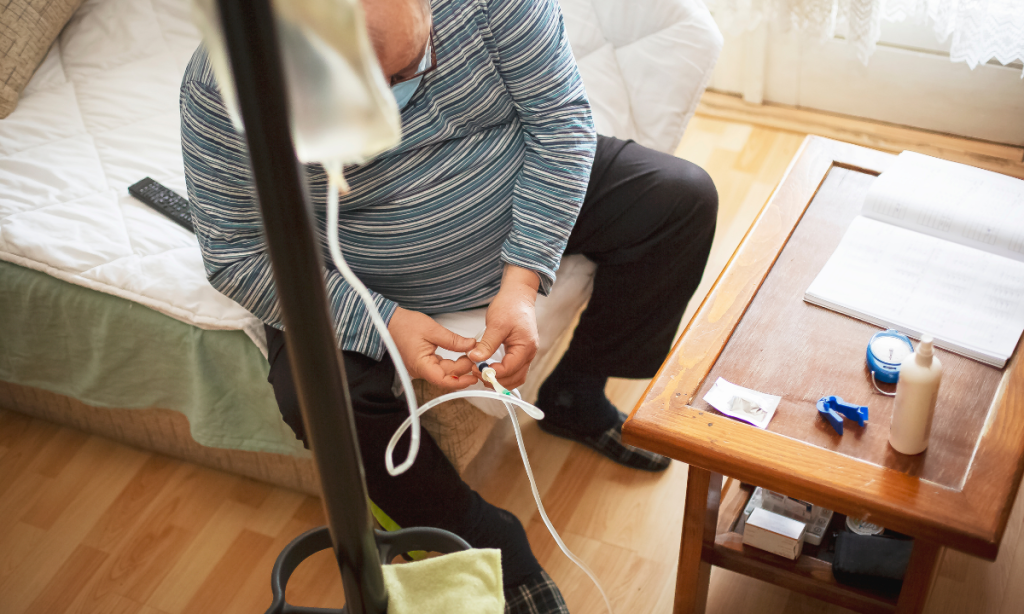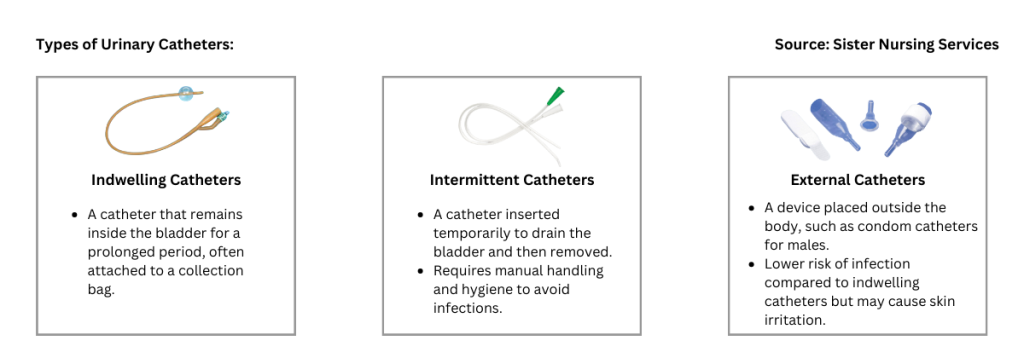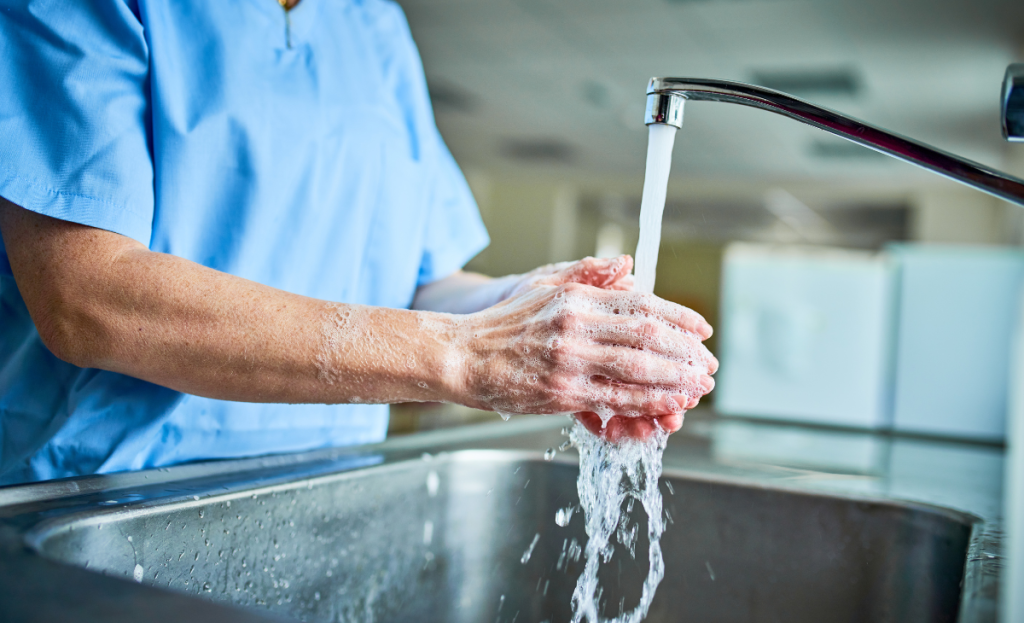Catheter Care: 7 Essential Tips for Safe & Effective Health Management

Learn about catheter care, including what catheterization is, why it’s a sterile procedure, and best practices for maintaining catheter health. Ensure safety and comfort with our comprehensive guide.
Proper catheter care is essential for individuals who require catheterization for medical reasons. Understanding the process, the importance of sterility, and how to care for a catheter can significantly reduce the risk of infections and other complications. In this comprehensive guide, we’ll delve into what catheterization is, why it’s a sterile procedure, and provide detailed information on effective catheter care.
Table of contents
1. What Is Catheterization?
Catheterization is a medical procedure that involves inserting a thin, flexible tube called a catheter into the body to:
- Drain Fluids: Such as urine from the bladder.
- Administer Medications: Delivering drugs directly into the bloodstream or specific organs.
- Perform Diagnostics: Measuring internal pressures or collecting samples.
Common Reasons for Catheterization:
- Urinary retention due to an obstruction or nerve problems.
- During and after surgical procedures.
- Monitoring urine output in critically ill patients.
- Administering chemotherapy or antibiotics.
2. Why Is Catheterization a Sterile Procedure?
Catheterization must be performed under sterile conditions to prevent introducing harmful microorganisms into the body, which can cause serious infections.
Importance of Sterility:
- Prevent Infections: The insertion site can be a direct pathway for bacteria into the body.
- Protect Vulnerable Areas: Organs like the bladder are sterile environments; introducing bacteria can lead to infections like Urinary Tract Infections (UTIs).
- Reduce Healthcare-Associated Infections (HAIs): Maintaining sterility helps prevent infections acquired during medical care.
Sterile Techniques Used:
- Hand Hygiene: Thorough washing or sanitizing of hands before the procedure.
- Use of Sterile Gloves and Equipment: Prevents contamination.
- Antiseptic Cleaning: The insertion site is cleaned with antiseptics.
- Sterile Field: Using sterile drapes and tools to create a contamination-free area.
Here is Link to infection prevention protocols: WHO: Infection Prevention and Control
3. Types of Catheters
Understanding the different types of catheters can help in their proper care.
Urinary Catheters
- Indwelling Catheters (Foley Catheters): Placed in the bladder for extended periods.
- Intermittent Catheters: Inserted as needed to drain the bladder and then removed.
- External Catheters (Condom Catheters): Placed over the genitalia; used primarily in males.
Other Catheters
- Central Venous Catheters: Inserted into large veins for medication delivery.
- Peripherally Inserted Central Catheters (PICCs): Used for long-term intravenous access.
- Suprapubic Catheters: Inserted directly into the bladder through the abdomen.

4. Importance of Proper Catheter Care
Proper catheter care is crucial to:
- Prevent Infections: Reducing the risk of UTIs and other infections.
- Ensure Functionality: Keeping the catheter working effectively.
- Enhance Comfort: Minimizing discomfort and potential complications.
Complications from Poor Catheter Care:
- Infections: Bacterial growth leading to UTIs or bloodstream infections.
- Blockages: Build-up of sediment or kinks in the catheter.
- Skin Irritation: Inflammation or sores around the insertion site.
5. Best Practices for Catheter Care
Hand Hygiene
- Before and After Handling: Always wash hands with soap and water or use an alcohol-based sanitizer.
- Glove Use: Wear disposable gloves when touching the catheter or drainage system.
Cleaning the Catheter Site
- Daily Cleaning: Gently clean the area around the catheter insertion site with mild soap and water.
- Avoid Tugging: Ensure the catheter is secured to prevent pulling or movement.
Monitoring for Infections
- Signs to Watch For:
- Fever or chills.
- Cloudy, foul-smelling, or bloody urine.
- Redness, swelling, or pain at the insertion site.
- Action: Contact a healthcare professional if any signs of infection are present.
Fluid Intake
- Stay Hydrated: Unless contraindicated, drink plenty of fluids to keep urine flowing and reduce infection risk.

6. Common Catheter Complications and How to Prevent Them
Urinary Tract Infections (UTIs)
- Prevention:
- Maintain sterility during catheter insertion.
- Regularly clean the catheter and surrounding area.
- Ensure proper drainage and avoid kinks in the tubing.
Catheter Blockage
- Prevention:
- Adequate fluid intake to prevent sediment build-up.
- Regular monitoring and flushing if recommended by a healthcare provider.
Skin Irritation and Pressure Sores
- Prevention:
- Secure the catheter properly to prevent movement.
- Regularly inspect the skin around the insertion site.
- Use protective barriers or dressings if necessary.
7. When to Contact a Healthcare Professional
Seek medical attention if:
- Infection Signs: Fever, chills, or unusual discharge.
- Catheter Issues: Leaks, blockages, or if the catheter falls out.
- Pain or Discomfort: Persistent pain at the insertion site or during urination.
- Changes in Urine: Blood in urine, foul odor, or significant changes in color.
Frequently Asked Questions about NDIS
How often should I clean my catheter?
Clean the catheter insertion site at least once daily and after any bowel movements.
Can I bathe or shower with a catheter?
Yes, unless advised otherwise by your healthcare provider. Ensure the catheter and insertion site are cleaned and dried properly afterward.
How long can a catheter stay in place?
It depends on the type of catheter. Indwelling catheters may be used for weeks to months, but they require regular monitoring and care.
What can I do to prevent catheter-associated infections?
Maintain proper hygiene, follow care instructions, stay hydrated, and monitor for any signs of infection.
Is it normal to experience discomfort with a catheter?
Some initial discomfort may occur, but persistent pain or significant discomfort should be reported to a healthcare professional.
Conclusion
Proper catheter care is essential for preventing infections, ensuring comfort, and promoting overall health. Understanding what catheterization is, why it’s a sterile procedure, and adhering to best practices can significantly reduce risks associated with catheter use. Always follow your healthcare provider’s instructions and don’t hesitate to reach out to them with any concerns.
“Detailed catheter care checklist: Bladder & Bowel Community: Catheter Care Guide”



